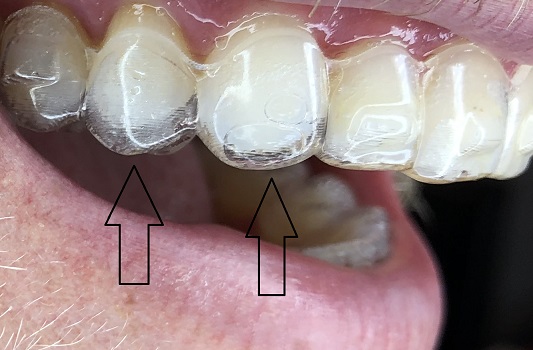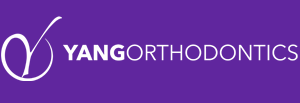General Questions
Which treatment is the fastest/best?
Thanks to advances in technology, just about every type of treatment is relatively fast.
To make your treatment go as quickly as possible, be sure to follow your orthodontist’s instructions on brushing, flossing, professional cleanings, and diet. Keep your scheduled appointments with your orthodontist. If these two things are kept up with, you’ll reach your smile journey goal in no time. Orthodontists have the training, experience and treatment options to make sure you get your best smile.
Do I need to change my oral hygiene routine or diet during treatment?
Yes, keeping your teeth and braces (or other appliances) clean requires a little more effort on your part. Your orthodontist will explain how to brush and floss, how often to brush and floss, and give you any special instructions based on the kind of orthodontic treatment you are having. Be sure to follow your orthodontist’s dental hygiene recommendations to get the best results possible. Check with your orthodontist about dental products and tools that might be helpful.
In general, patients with an orthodontic appliance must be careful to avoid hard, sticky, chewy and crunchy foods. They should also avoid chewing on hard objects like pens, pencils and fingernails. And never chew ice. It’s much too hard on your teeth – even without braces.
Also be sure to see your family dentist for a professional cleaning and check-up at least every six months during your orthodontic treatment, or more often, if recommended.
Is there an ideal age for orthodontic treatment?
Chronological age is not a factor when deciding whether a patient is a candidate for orthodontic treatment; there is not one ideal age for treatment to begin. Healthy teeth can be moved at any age. Regardless of age, patients can look forward to teeth that not only look better, but work better, too.
The American Association of Orthodontists (AAO) recommends that all children get a check-up with an orthodontist at the first recognition of the existence of an orthodontic problem, but no later than age 7. Few patients will need to begin treatment that young, but there are some who will benefit from early intervention. For these patients, treatment is likely to consist of guiding the growth of the jaws so that the permanent teeth are in good positions as they come in.
I’m considering getting a tongue or lip piercing. Are there any dangers?
There are numerous potential problems from oral piercings, which can include the tongue, cheeks, lips or uvula (the tissue at the back of the throat). Particularly with tongue piercing, you can permanently damage your teeth by wearing away the enamel, or by chipping or cracking teeth. There is risk of abrasion or recession of gum tissue if it is constantly hit by the piercing.
Piercing can interfere with basic functions like chewing, swallowing, talking and the sense of taste. A hole from a piercing can be a path for germs into the body and bloodstream. Talk to your orthodontist or dentist for more information.
Braces
I think something broke.
Please see our Problems and Solutions page for all common braces issues and what to do.
Our Braces page provides more general information on braces and how to care for them.
Is it possible to get braces on just my bottom or top teeth?
The only way to know this is by visiting an orthodontist for an exam and consultation. Orthodontic treatment is designed to develop teeth that fit well and, as a result, wear better over an individual’s life. Both rows of teeth must line up properly for a bite that will avoid excessive wear throughout a lifetime of use. If braces are only on one row of teeth, they may not meet up with the other row. Ability to have one row of braces is case dependent.
I don’t want old-fashioned braces. What are my options?
Thanks to advances in technology, your treatment options may include ceramic (tooth-colored) braces, lingual braces, which are placed behind the teeth, or clear aligner trays.
Today’s standard metal braces are much smaller and sleeker than those of even a generation ago. Please review your options with an orthodontist at an in-person consultation to determine what type of treatment will be best suited to your needs. Orthodontists have the training, experience and treatment options to make sure you get your best smile.
Can I get braces if I’m missing some teeth?
Orthodontic treatment may be able to close the space of a missing tooth, or may be able to create or save sufficient space for a replacement tooth/teeth. Consult an orthodontist to discuss what is right for you. Your orthodontist may need to work with your primary care dentist and/or other dental specialists to help you achieve your treatment goals.
Will my braces set off the metal detectors in the airport?
You are cleared for takeoff – the lightweight materials used in braces will not affect metal detectors.
Can I play musical instruments while wearing braces?
With practice and a period of adjustment, braces typically do not interfere with the playing of wind or brass instruments. Talk to your orthodontist if you’re having difficulty. They may be able to provide covers for your braces to help you play more naturally.
Phase 1 Treatment
Does an expander hurt?
Your expander may take a few days to get used to. At first, chewing, swallowing, and talking may seem awkward. Your mouth or nose may be sore or tingly, or you may have a slight headache. Over-the-counter medications are all you need to treat this.
Why do young kids get braces?
Redistribution of spaces is important at a young age. Oftentimes, the goal is to move the teeth to facilitate the eruption of permanent ones. At this stage, we are more focused on the growth and development of the child, including skeletal, dental, and psychosocial issues. I have an expander.
Why do I see spaces between my front teeth?
That’s a sign the expander is working. Space between your front teeth may occur in about a week or so after starting expansion.
Do I need braces, even after Phase 1?
Yes. Phase 1 focuses on the growth and development of teeth and the jaw. The goal is not necessarily to align the teeth at this point. Most patients need a full set of braces/invisalign once all of the permanent teeth come in, which is referred to as Phase 2.
More information can be found on Phase 1 and Rapid Palatal Expander (Palate Expander). Click on them to be redirected to the page.
Invisalign (Clear Aligners)



What does the STOP sticker mean?
Our goal is to streamline your Invisalign experience. There are certain appointments we need to see you at before you proceed with the series of aligners. We have placed a “stop” sticker to remind you to stop proceeding with the series of aligners and come see us. If you can not see us, please stay on the aligner before the stop sticker.
A button came off. Is that okay?
Yes. Your attachments (buttons) are used as pressure points to move the teeth. Aligners will continue to move the teeth regardless of the attachments. Although replacing attachments are not urgent, let us know at your next appointment, and we will replace them as needed.
My front teeth feel loose. Why?
This is normal. During orthodontic treatment, your teeth move with Invisalign. Teeth will set and become firm again after movement is complete.
Do I still need to see my dentist?
Yes. Orthodontists focus on the movement and alignment of the teeth. We do not look for cavities. You should still see your dentist every 6 months for regular cleanings and check-ups.



My aligners are not fitting my teeth.
If you’re having trouble seating your aligners properly, you can use Invisalign Chewies to seat them. Make sure you wear your aligner for at least 21 hours per day. Treatment falls behind if you are not wearing your aligners properly for the minimum wear time. Your treatment plan is reliant on your cooperation; your teeth simply will not move as quickly as intended if aligners aren’t consistently worn. If your aligners are not properly seating, additional aligners may be necessary.
For more information on Invisalign/clear aligners, click here to see how to care for your aligners. If you want to know more about our treatment options with Invisalign, click one of the following pages to learn more: Invisalign First, Invisalign Teen, Invisalign Express.
Insurance
The following information can be found on our Insurance Options page.
Do I need dental insurance for orthodontic treatment?
No, you do not need dental insurance to start orthodontic treatment. In fact, less than 50% of our patients have dental insurance. Also, some dental insurances don’t have orthodontic coverage. The most important thing when it comes to dental insurance is to check with the carrier’s coverage policies.
What should I look for in my carrier’s coverage policies?
There are a few things to check for:
- Waiting period – You may have to wait several months before you are covered for dental care beyond routine hygiene check-ups and cleanings with your dentist.
- Age limit
- “Medically necessary” clause – some dental insurance plans only pay out for orthodontic treatment when it’s medically necessary
- If it makes financial sense – Take the waiting period into consideration. See if the benefits outweigh the premium. Remember, your dental insurance must be active for the entire duration of the orthodontic treatment to receive the full benefit.
- Assignment of benefits – insurance may either pay us directly or send the benefit to you depending on the plan. This will change your patient responsibility amount.
What procedures are not covered?
Replacement retainers (beyond the first set we provide), teeth whitening, and anything cosmetic would not be covered by insurance.
Can I drop my insurance once I start treatment?
It is not recommended. Insurance plans do not reimburse orthodontic treatment in one lump sum. If you discontinue your insurance, your benefit will not be paid out, and you will be responsible for that amount.
What happens if I switch my insurance mid treatment?
Before you choose your new insurance plan, be sure to check for “Treatment in Progress” or “orthodontic in progress” as a policy feature. This ensures that any current orthodontic treatments underway will continue with the new policy. If you switch insurances, let us know as soon as possible. Most insurance plans have a once in a lifetime clause, but we will help you make this transition as seamless as possible.
Can I buy insurance after orthodontic treatment has already started?
It is most likely that your plan will not cover orthodontic treatment after it has started.
I have 2 insurances. How will the benefits work?
In most cases, your insurance benefits will not stack. Your insurance will be classified into primary and secondary insurance. Primary insurance processes your claim first, and then your secondary insurance will process the rest of the claim based on how your plan is written. All patients are encouraged to contact their insurance carrier. Insurance carriers determine the benefit.
Still have questions? Don’t hesitate to ask us! You can call or text Yang Orthodontics at 215-757-0864. You can also email us at [email protected] or click here to schedule online.

